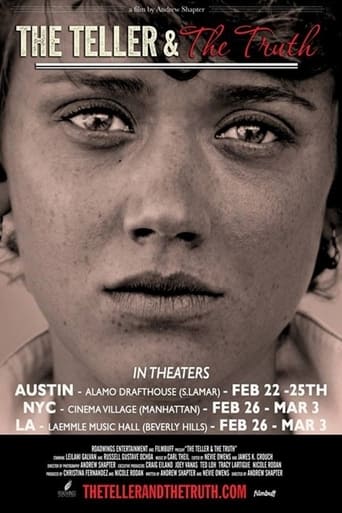Metrowog7
Nicely composed score and beautifully filmed quasi documentary that basically glorifies an antisocial protagonist -Oliver who loved his dog the way Tony Soprano loved children and geese- and a histrionic partner who might have been a victim herself. The narrative does not express any remorse for people who suffered from this couple actions simply because they were conservative and short minded folks from a small town in Texas. This narrative is single minded, too romanticized, and somehow ignorant. I could not believe that we had to watch 40 minutes of this soap opera to realize the. director's fantasies of creating a hallow version of Bonny and Clyde. As the other reviewer mentioned, the film narrative is a mess and montage is a disaster. I liked the music and cinematography, so 4 stars for that.
Bruce Burns
In 1968, the Beatles recorded "Hey Jude", a seven-minute song where the main portion is finished in just over three minutes and closes with four minutes of them singing the chorus as the music fades out. It became their best-selling single and is rightly considered one of the greatest songs of all time. "The Teller and the Truth" starts out as a documentary about the real-life unsolved case of the 1974 disappearance of bank teller Francis Wetherbee from Smithville, Texas. The documentary portion of the film finishes up in a little over a half hour, and the remaining 40 or so minutes is an extended montage showing what might have happened. What worked so well for the Beatles in song does not work at all in Andrew Shapter's film.As I stated earlier, the movie starts out as a documentary/noir about a real-life incident. Most of part one of the film is interviews with Wetherbee's friends, fiancée, and the reporters and policemen who worked the case. As there is not much visual footage of what happened, the filmmakers rely on actors recreating the events. Wetherbee herself is portrayed by Leilani Galvan--a dead ringer for Marion Cotillard. What happened is that a week before her disappearance, the bank where Wetherbee worked was robbed. The main suspect was Oliver Pearce, a drifter who was dishonorably discharged from Vietnam and who also went missing at around the same time.Once all of this is established, there's nothing factual left to document, and there's not enough material for a feature-length film, so the filmmakers created a "happily-ever-after" scenario and stretched it out until they finally got an 82-minute movie out of it. In the filmmakers' imagination, Francis and Oliver were secretly in love. When Francis learned she was pregnant with Oliver's child, they staged the robbery and disappearance so they could get away from Smithville (described variously as too conservative, too Christian, too isolated and too American for anyone with spirit). They went to India where they became spiritually enlightened (although exactly how is kept rather vague), and ended up in rural France.This could have worked if this portion had been done as a conventional narrative film, but instead it is done as a 40+ minute montage with no spoken dialog. Instead, the story is told in third person by a female narrator whose identity is not revealed until several minutes into it. And it's not enough for them to establish that they lived happily ever after. They have to tell us exactly how they lived happily ever after. There were several points where the story could have ended, and they kept going past it right up until the present day, when their daughter (who should have been in her mid-to-late 30's, but who is played by an actress who appears to be in her 20's) decides to go back to Smithville to see how it all began."The Teller and the Truth" tells a fascinating story that--in the hands of more capable filmmakers--could have been a good movie. Instead, the lurches in tone and content in the second half of the film left me very unsatisfied. 1 out of 10.



